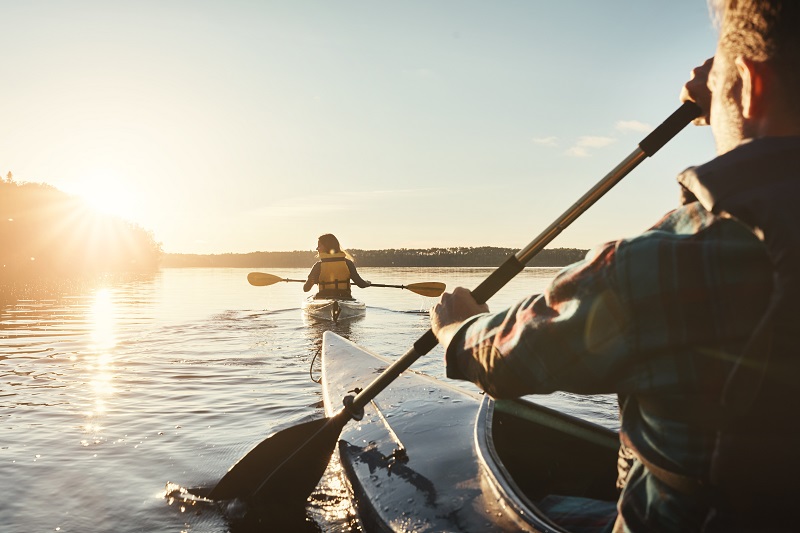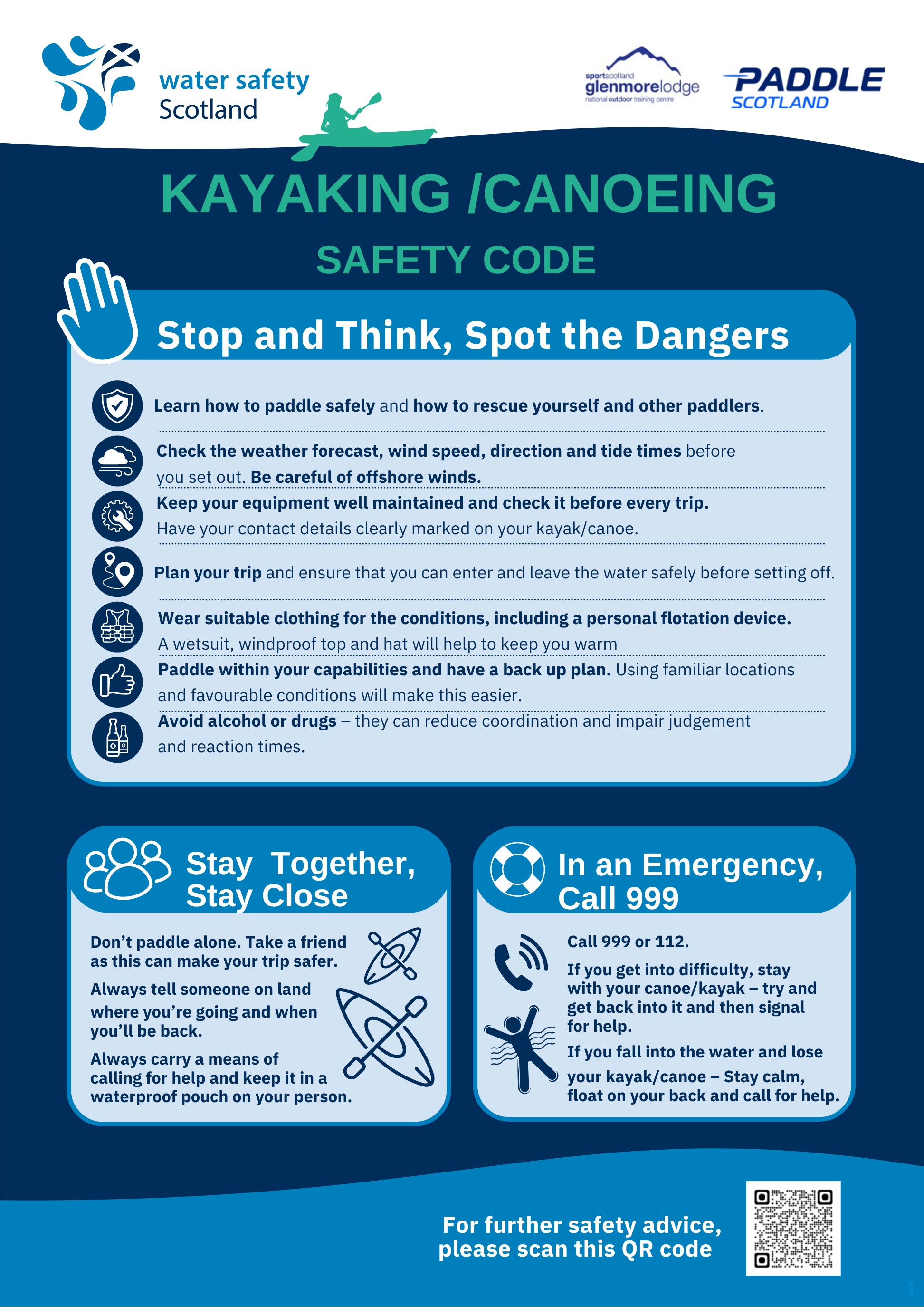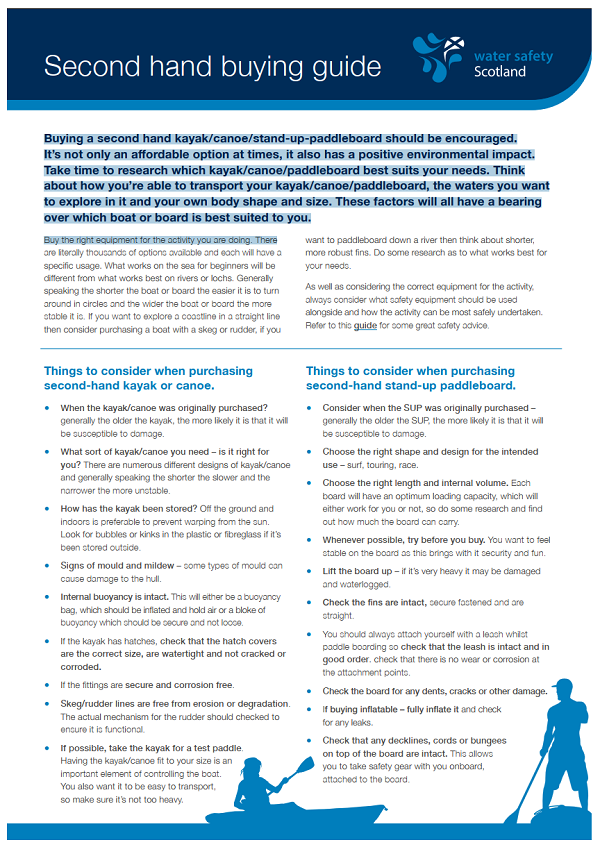Kayaking, Canoeing
Canoeing and kayaking are both popular recreational and competitive sports and can offer adventure, exercise, and fun, as well as a chance to explore nature and enjoy beautiful scenery.
Canoes and kayaks look fairly similar - they’re both types of boats and use a paddle - but there are a few differences between the two. Canoes are open, have higher sides, and can carry more people and cargo; kayaks are (usually) closed, have lower sides, and are more agile and fast. Canoes are usually paddled by one or two people with single-bladed paddles, while kayaks are normally paddled by one person with double-bladed paddles.
There are a variety of different choices in terms of the size and composition of the vessel as well as the intended number of users.
Whichever vessel you choose, it’s important to consider safety before going out on the water. Please refer to the WSS kayaking/canoeing safety code which highlights the main considerations and advice. You can also get lots of great advice on the Paddle Scotland website.
What is the risk?
Like most outdoor activities there are risks and dangers associated with canoeing and kayaking, such as:
- being unable to swim adequately
- venturing into shallow rocky waters if you’re in an inflatable craft
- paddling alone
- not wearing life jackets or personal floatation device (PFD)
- lack of understanding of the impact of weather conditions i.e. wind and currents.
These activities can be safe and fun if you’re prepared for them.
How to minimise the risk
- If possible always go with a friend or group. It’s more fun, and they can help you if you get into difficulty.
- If you are going out alone, always tell someone where you're going and when you'll be back
- Don't leave the house without a mobile phone or other communication device, walkie talkies can be good as they work on line of sight and will work when mobile phone signal is poor.
- Bringing your phone to take some photos? Make sure you keep it in a waterproof pouch. That way it won’t get wet, and you can use it to call for help in an emergency too.
- Check the weather forecast and tide times before you set out. If the water is too choppy, you might find it difficult, especially if you are a beginner. Also be aware, the conditions can change quickly.
- Avoid offshore winds. These could quickly blow your canoe/kayak far out to sea, which can make it extremely tiring and difficult to paddle back to shore. Avoid launching in windy conditions.
- You should wear a suitable personal flotation device. This can be a buoyancy aid or a lifejacket. Choose one that still allows you plenty of movement so you can paddle freely. Not only will it keep you afloat, but it will also help give you time to recover should you fall in.
- Wear a wet suit if kayaking, think about dry warm clothing if canoeing.
- Its best to have practiced getting back onto your water craft should you fall in.
- Consider purchasing/bringing spare paddles

Buying Second-Hand Equipment
Buying a second hand kayak, canoe or a stand-up-paddleboard should be encouraged. It’s not only an affordable option at times, it also has a positive environmental impact.
Take time to research which kayak/canoe/paddleboard best suits your needs. Think about how you’re able to transport your kayak/canoe/paddleboard, the waters you want to explore in it and your own body shape and size. These factors will all have a bearing
over which boat or board is best suited to you.
Please view the full buying guide .pdf attached which may help when you are considering buying second-hand equipment.
If downloading on mobile phone please check your downloads folder after clicking the image button.


